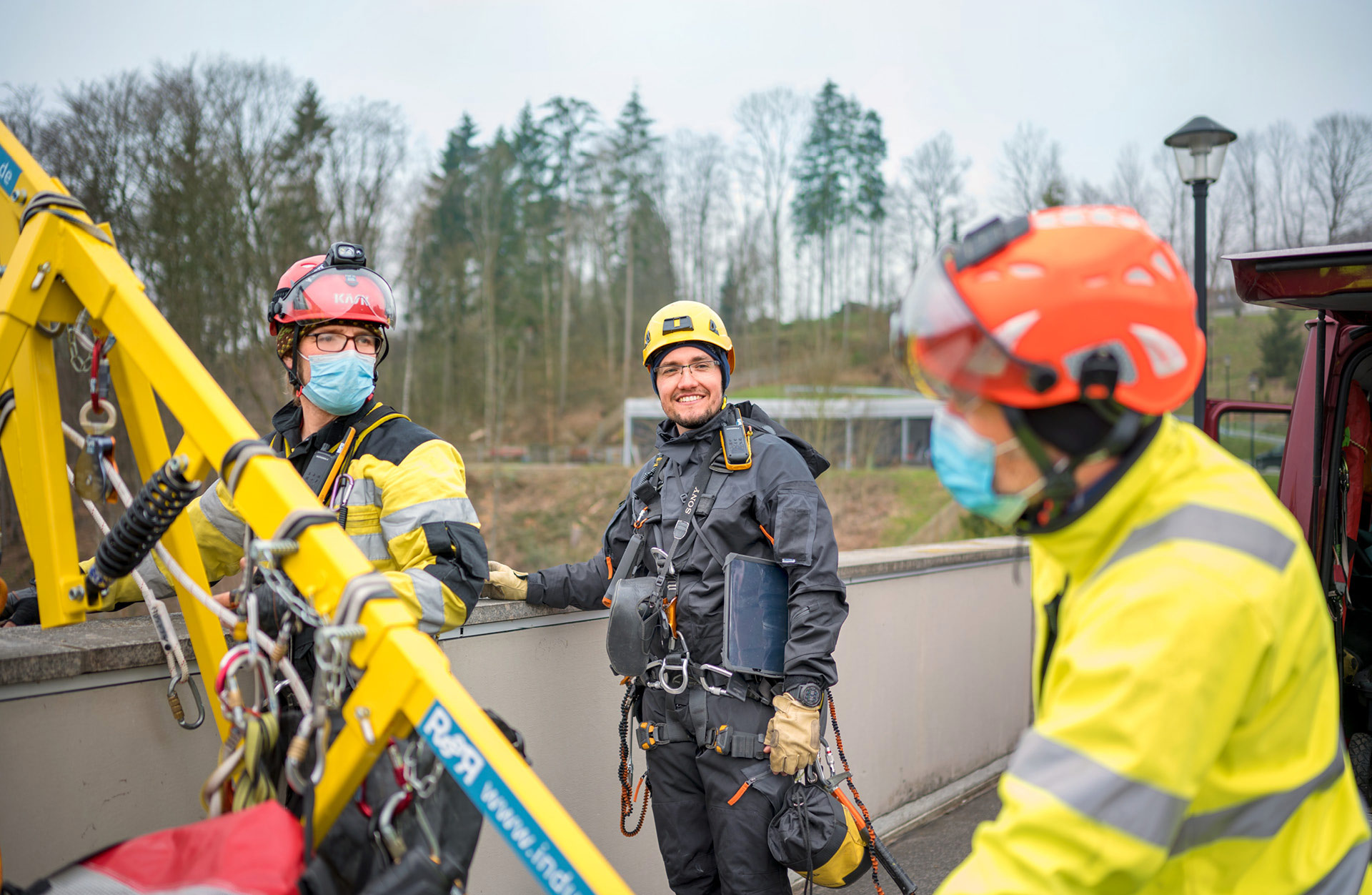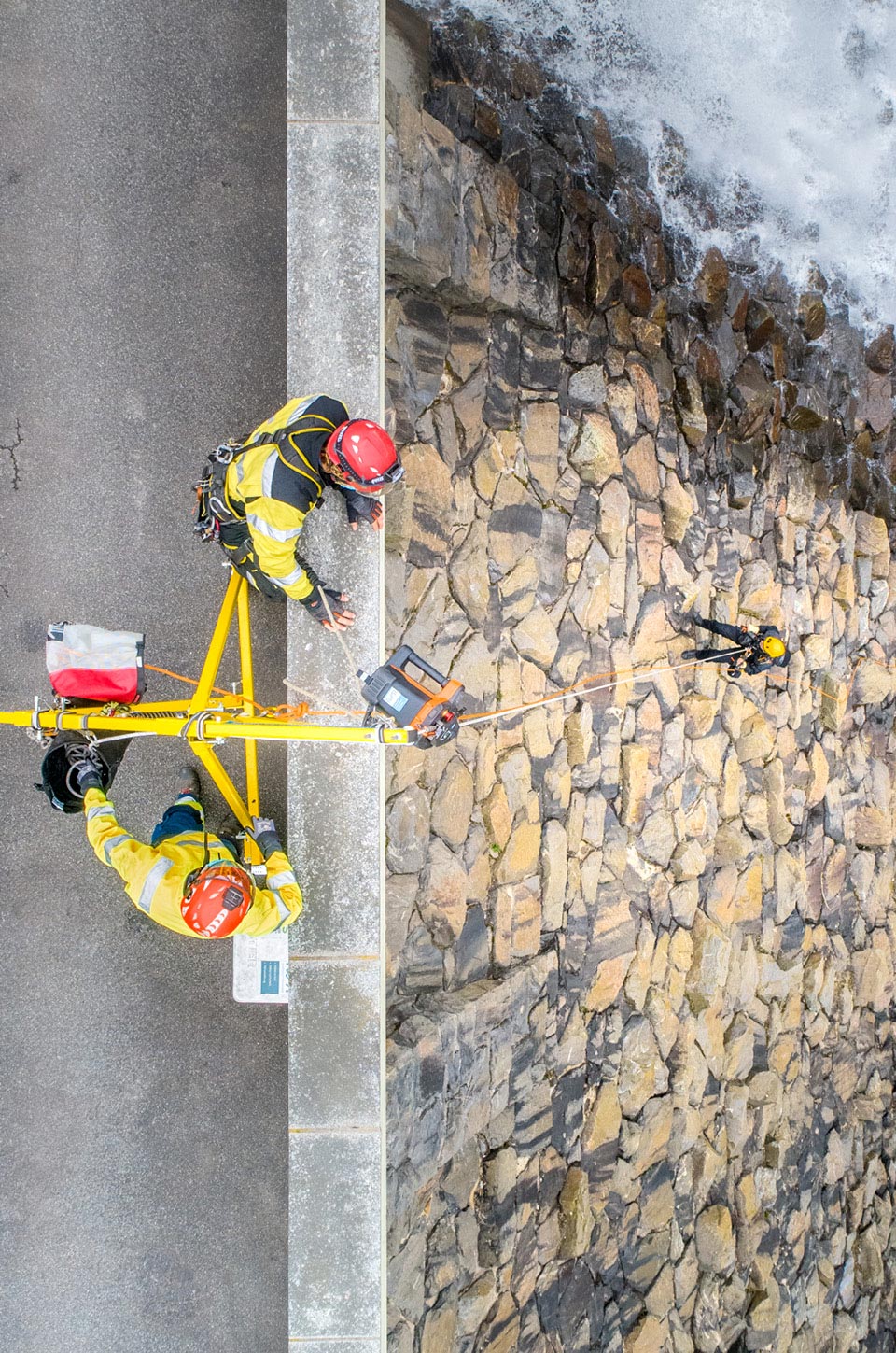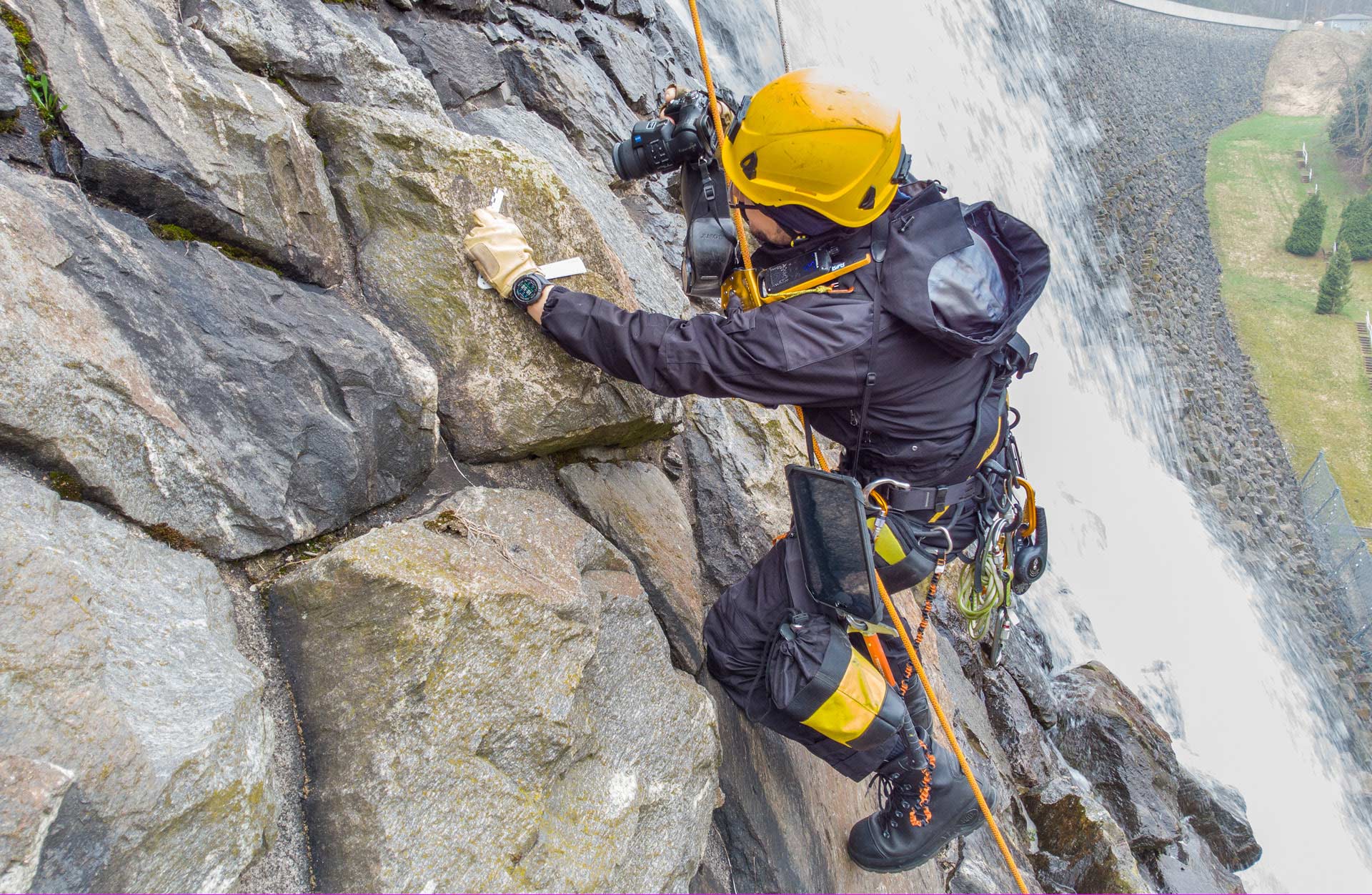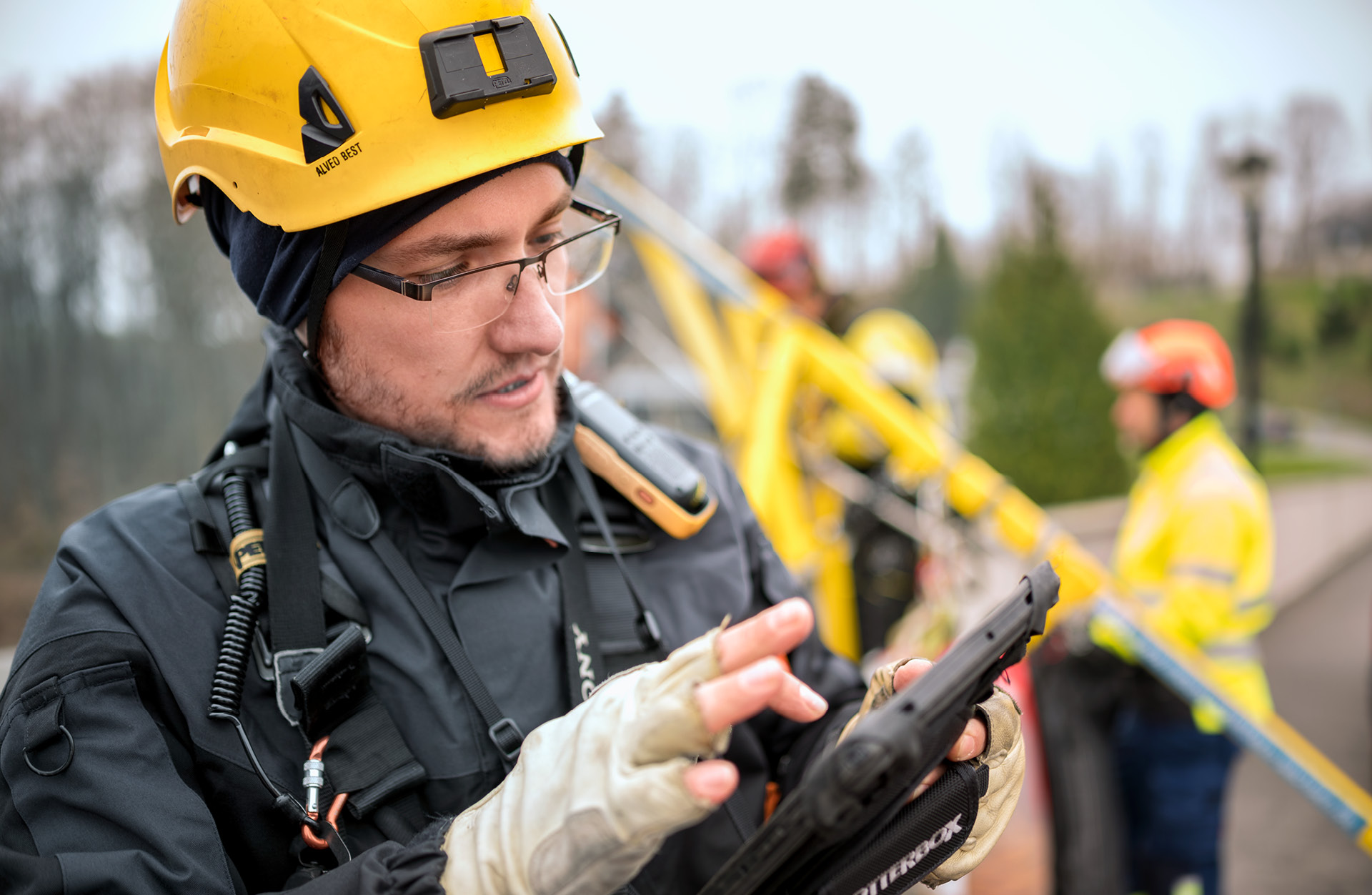Underwater and in the air – Safety inspection at the dam
The Saidenbach Dam is one of Germany’s 30 largest dams and is primarily responsible for providing Chemnitz and southern Saxony with drinking water . The impressive structure was also developed to prevent flooding along the Flöha river. Measuring 334 meters in length and nearly 60 meters in height and featuring a four meter wide road along its “crown,” the dam wall prevents 23 million cubic meters of water from cascading down into the valley with enormous pressure. So it is clear that the structure needs to be maintained and examined for damage at regular intervals. “Over time, changing water pressure, fluctuations in temperature, and weather changes take their toll on the wall. They cause erosion and lead to smaller cracks, which allow water through to the other side,” explains Steffen Hein (49), Structural Inspection Expert at the Dresden branch. He and his team of specialists have been commissioned to ensure the dam’s stability and function and, since the late fall of 2020, have been carefully inspecting the damage up close and documenting it on the basis of the DIN 1076 structural inspection standard.
Safety inspection at the steep wall
But how do you find and document a small crack a few decimeters in length on a surface of around 16,000 square meters? How do climbers and divers orient themselves in this task? Andreas Donnert (36), the team climber, explains: “We use modern methods such as measurement with a camera drone. We had the entire wall photographed and mapped this way and had a digital CAD model created. And we split the entire dam wall on both the water and air side into inspection columns, which we marked with lines, lines providing us with a form of orientation on both the air and water side.”
And with that, he rappels down the wall, which drops down vertically nearly 60 meters. Of course, professionally secured by his colleagues to ensure safe climbing. He hangs from the rope and inspects the dam wall. His most important equipment is a small hammer for exposing damage, a yardstick, and a digital camera for documenting any identified cracks.
Let’s go diving
Steffen Hein is a specialist in scientific diving. The water is currently 6°C, and the air isn’t much warmer. But the 49-year-old says it is more comfortable that way. “Diving is much better in the colder months due to visibility. And at a depth of 40 meters, the temperature remains at a constant 4°C anyway, with very little fluctuation. And that’s exactly what my diving suit is designed for.” Just like with climbing, there are strict safety regulations to observe when diving. Hein has to carry of all the really vital pieces of equipment twice: depth gauges, air tanks, valves. And Steffen Hein is not diving alone. “Just to be on the safe side, we always have to have two other divers present when I go in.” Underwater, visibility is just about one meter. But at least the suspended lines provide him with a good form of orientation. The diver carefully examines one square meter after the other and can reach areas that would be inaccessible to a remotely operated underwater vehicle. Changes in the material and damage are carefully examined up close and documented with photos. “This test procedure has proven its worth in structural engineering over the decades,” says the DEKRA employee.
In the name of safety
It takes several months to inspect the dam, largely due to the work underwater. “We’re talking about examining 16,000 square meters of surface,” says Hein. “While a climber can make comparably good progress on the air side, things are much different when diving. More personnel and materials are required, and strict occupational health and safety regulations limit the amount of time we can spend in the water.” The DEKRA experts have identified several spots of damage on the dam wall during their safety inspection, which need to be precisely measured and photographed. Hein and his team then mark the exact positions on a large map hung up at the diving base, so that they can be located again for repair at a later date. The whole process is followed by a briefing, and everyone is in high spirits. The fog of the morning has lifted and it is beginning to feel more like an afternoon in the early summer. It would appear that everyone involved enjoys their dangerous job, which is further enhanced by the wonderful feeling of working on land, underwater, and in the air – all in the name of safety.
While a climber can make comparably good progress on the air side, things are much different when diving. More personnel and materials are required, and strict occupational health and safety regulations limit the amount of time we can spend in the water.
Steffen Hein, Structural Inspection Expert at DEKRA





